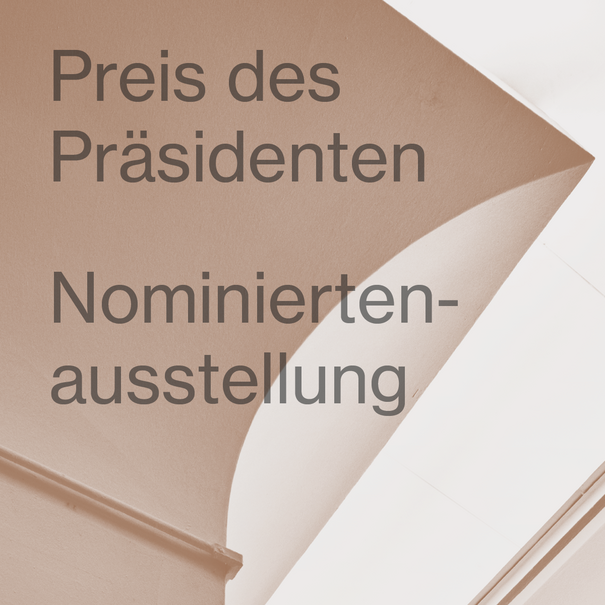
Exhibition of the nominees for the UdK Berlin: The President’s Fine Arts Award
From May 4-6, 2022, the works of the nominees for the 2022 UdK Berlin: The President’s Fine Arts Award will be on display in the Quergalerie of Hardenbergstrasse 33.
gazing at the glazing from Victor Petrov on Vimeo.
gazing at the glazing from Victor Petrov on Vimeo.
The spatial installation Gazing at the Glazing consists of 60 commercially standard riot signs, such as those used by police authorities around the world for crowd control. Cross-shaped stainless steel brackets, linked by stainless steel cables, connect the individual signs to form a monumental facade fragment. Due to its own weight, the two-dimensional construction seems to unfold and at the same time in the process of collapsing.
Gazing at the Glazing moves between architecture and sculpture, bringing together functional and autonomous moments of both categories. The construction method is borrowed from a frameless glass curtain wall, as first designed in 1986 for the Cite des Sciences et de l'Industrie by Adrien Feinsilber and RFR in Paris. However, the Technical Museum is not merely a building and as such represents a technological pinnacle in the construction of glass facades; it is also a component of François Mitterrand's Grands Projets political program. In this respect, the building is an idea generator of institutional architecture. The CDU building or the Marie-Elisabeth-Lüders-Haus in Berlin follow suit and are examples of the political dimension of transparent architecture and its representative significance.
The project was implemented with the external support of Prof. Dipl.-Ing. Architekten Carsten Wiewiorra, who provided me with structural engineering support and technical advice. Through this collaboration, functional and formal aspects of the work became more closely intertwined, ultimately making it legible in terms of its form as part of the architectural canon. But what makes architecture architecture and what does its vocabulary consist of?
According to Andrea Kahn's analysis, "the idea in a vital strain of postmodern design [is] that architecture should look like architecture".In her essay "The Invisible Mask", she criticizes modern culture for its explicit preoccupation with the visible and its ignorance of the deeper political nature of architecture: the disciplining of space (1). Gazing at the Glazing plays on this critique, subverting the architectural object through mimesis. It speaks in its formal language while depriving it of its most important architectural functions: Stability and protection. In the process of collapse, the boundary between interior and exterior, private and public space, which remains "inextricably bound to architecture" (2), is erased. The deconstruction of architectural practice is equally a critique of its repressive function and an artistic strategy to think it beyond its representational technique.
(1) Kahn, Andrea, The Invisible Mask, in: Drawing, Building, Text, hg. von Kahn, Andrea, New York 1991, S.85.
(2) Philipp, Klaus Jan, ArchitekturSkulptur. Die Geschichte einer fruchtbaren Beziehung. Stuttgart Berlin
2002, S.15.
Weitere Infos zum Künstler: www.viktorpetrov.com
Instagram: @viktornotviktor